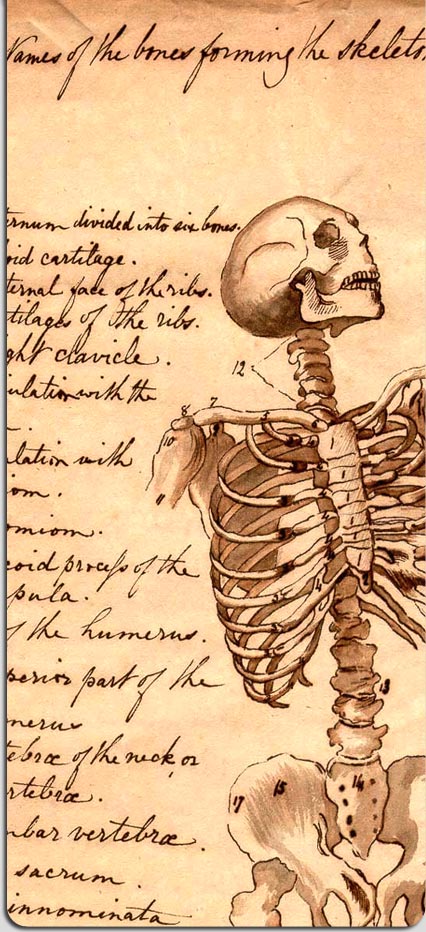I’ve been attending a mini lecture series on Medical Informatics, and some of the new technology coming up is pretty darn impressive. It seems almost ridiculous
that the health care industry has been able to get by with paper records for so long–every other industry has adapted to technology. (Secretary Tommy Thompson
of the Department of Health and Human Services likes to talk about how
health care can change if grocery stores can
, but I’d like to hope that we’re more cautious about getting our medical system right than we are our price checks on aisle seven.) Still, changes seem
right around the corner: there are finally some
good standards
in place to let software talk to other software and other systems, and things are finally becoming platform-independent. It’ll be a rough change, but it’s
already starting to happen, and based on the data I saw, it’s for the better. Note, of course, when I say “right around the corner,” I mean, in the
next 5-10 years.
Dr. Paul Tang
, CIO of
Palo Alto Medical Foundation
, gave us a look at their EHR system as well as their patient communication and interaction system, and I’ve got to say, they’re both pretty damn
impressive. (Note I’m calling it an Electronic *Health* Record, as opposed to an Electronic *Medical* Record; the goal is to get people to think of it as their
all-encompassing *health* status, not just their *medical* care. Yes, it’s semantics, but semantics shape the way we think. Ask any PR firm.) They use the EPIC
system, which seems to integrate absolutely, positively *everything* in the medical world and turn it digital. A patient’s history and physical are in the
chart, as well as all progress notes. All labs, complete with normal ranges, values, and explanations. Radiology (x-rays, MRIs, etc), too. Prescriptions are recorded,
and refills can be approved with a click of a button and are digitally faxed to the pharmacy of the patient’s choice. Patient communication online is also
integrated (more on that in a second.) And a summary of the visit is given the patient in paper form–the reason for their visit, the medications prescribed,
their follow-up instructions, etc. And while the documentation is still as painfully intense as ever, the software has keyboard macros that fill in text for you as
you type. And it’s customized depending on the illness, disease, or template: type “bl.” and hit enter, and if you’re describing a
patient’s lung disease, it will fill in “blood-tinged sputum.” It will even make clinical treatment suggestions if the physician doesn’t
appear to be following current best-practices.
And all this information is pulled from the same database for the patient. If you go to the
Palo Alto Medical Foundation Online
page as a patient, you can login and see your visit, and communicate with your doctor. And the same information that your doctor has given you regarding your disease
is the same information you see on your screen. Even better–the medical jargon in the definitions is all hyperlinked to explain what “dyspnea” or
“syncope” is. Or if you’re taking a new medication, he or she may ask you to follow-up to make sure you’re not having any side effects. You
login, send a message, and your doctor can respond–securely. Dr. Tang is very cautious and conservative about privacy and HIPAA regulations, s, all the
communication happens through the website, not via insecure email. The patient can even track his own lab data; if the patient starts taking a statin (to lower LDL
cholesterol), he or she can graph the cholesterol level over time.
Dr. Tang says the feedback he’s gotten is overwhelming positive from patients, and although there was initial resistance from physicians, they’re starting
to like the system, too. And according to multiple studies in medical informatics journals, doctors are more likely to practice medicine “better” (in more
accordance with guidelines) with electronic health records than with paper ones.
As a computer geek, I was really impressed with the system, but several concerns still remain issues with me. First, can we really just template-ize medicine? Can a
series of symptoms be put together in an algorithm and spit out a diagnosis? And be right every time? It seems like if medicine gets to the point where everything is
just checkboxes and data, you might miss a diagnosis. Hopefully I’m wrong. And doesn’t this take some of the fun out of medicine? And what’s the
point of having a doctor (or, ahem, medical student) learn all the side effects of drugs and all the complications of a disease if our software will tell them to us
anyway, and have a better memory of them than we do?
Second,
the digital divide
. All this technology is wonderful, and well adopted by the well-to-do in country club Palo Alto, but it falls apart if you were to walk 50 yards to East Palo Alto,
at the clinic where I’m working this summer. All the patient interaction requires a computer and an Internet connection, and frankly, that’s not available
for many people in this country. If we’re going to be moving to a new type of administrative system for health care, we need to make sure everyone can access it
fully, or else we’ll just be increasing health disparities even further.
But
Enoch
probably knows a lot more about this system than I do, seeing as though he kinda works at PAMF.
UPDATE
: I’m getting a ton of hits from
epicsystems.com
from some address “weekly_news.asp;” I’d love to hear what you guys think about my post, or in what context it’s been posted. Please, comment!
4 Comments »
